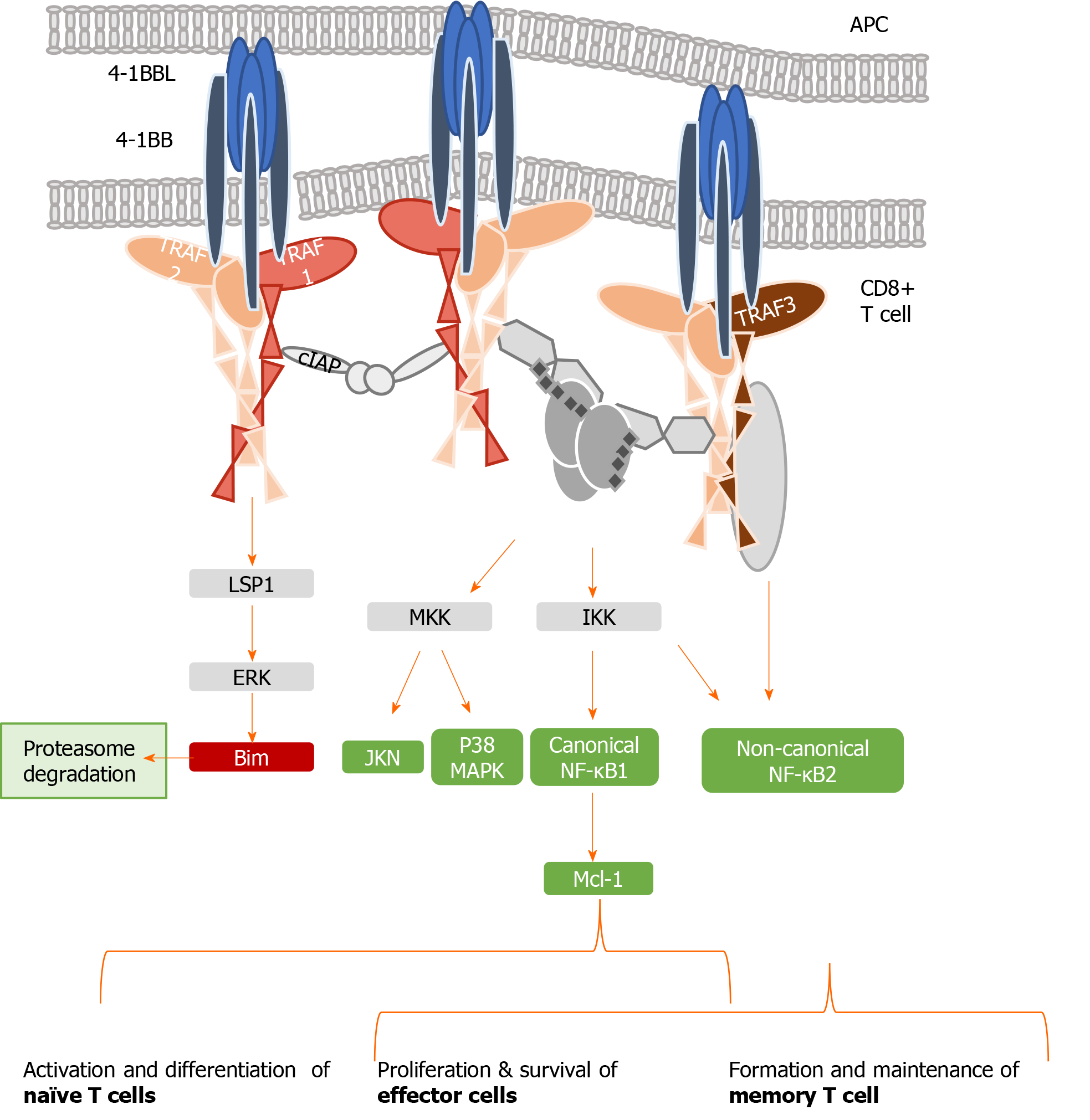Copyright
©The Author(s) 2020.
World J Hepatol. Oct 27, 2020; 12(10): 754-765
Published online Oct 27, 2020. doi: 10.4254/wjh.v12.i10.754
Published online Oct 27, 2020. doi: 10.4254/wjh.v12.i10.754
Figure 2 Tumor necrosis family receptor superfamily member 9/tumor necrosis factor receptor-associated factor 1 signaling complex.
Schematic representation of tumor necrosis family receptor (TNFR) superfamily member 9 (4-1BB) signaling pathways, indicating the interaction between the trimeric 4-1BB ligand presented by the antigen presenting cell and the three molecules of the receptor 4-1BB. The signal transduction occurs through tumor necrosis factor receptor-associated factor (TRAF) 1. Representative combinations of TRAF1, 2, and 3 and their interactions with adaptor proteins are presented. Canonical activation of nuclear factor kappa B (NF-κB) leads to the activation of naïve T cells, which differentiate into effector cells and proliferate after antigen encounter. Non-canonical NF-κB bestows proliferation and survival of effector cells and also drives the generation and maintenance of memory T cells in a delayed manner. APC: Antigen-presenting cell; 4-1BB: Tumor necrosis family receptor superfamily member 9; 4-1BBL: 4-1BB-ligand; TRAF: Tumor necrosis factor receptor-associated factor; cIAP: Cellular inhibitor of apoptosis protein; ERK: Extracellular signal-regulated kinase; MKK: Mitogen-activated protein kinase kinase; IKK: Inhibitory kappa B kinase; MAPK: Mitogen-activated protein kinases; NF-κB: Nuclear factor kappa B; Mcl-1: Myeloid leukemia cell differentiation protein.
- Citation: Peña-Asensio J, Sanz-de-Villalobos E, Miquel J, Larrubia JR. Tumor necrosis family receptor superfamily member 9/tumor necrosis factor receptor-associated factor 1 pathway on hepatitis C viral persistence and natural history. World J Hepatol 2020; 12(10): 754-765
- URL: https://www.wjgnet.com/1948-5182/full/v12/i10/754.htm
- DOI: https://dx.doi.org/10.4254/wjh.v12.i10.754









